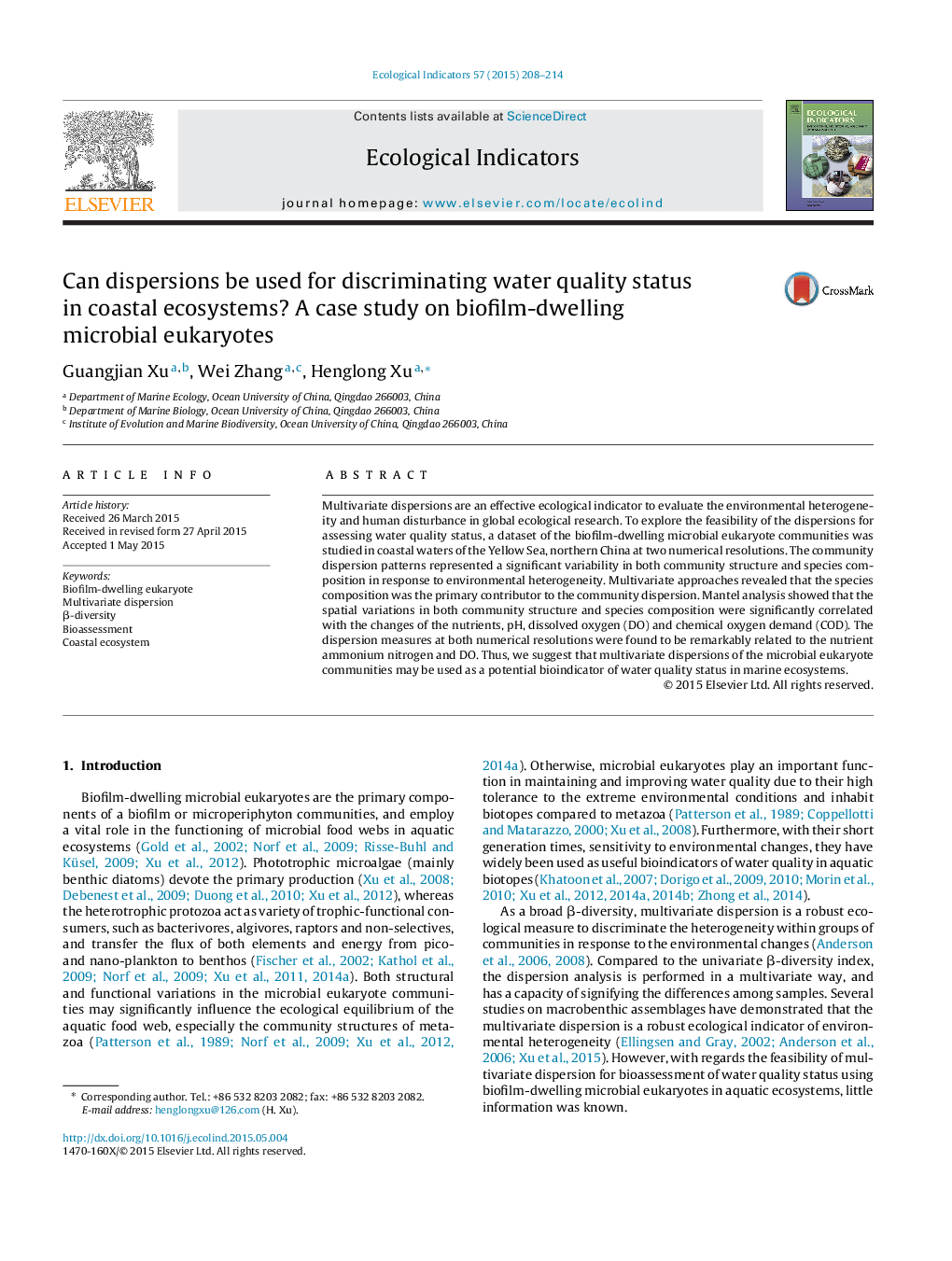| Article ID | Journal | Published Year | Pages | File Type |
|---|---|---|---|---|
| 6294648 | Ecological Indicators | 2015 | 7 Pages |
â¢Dispersions of biofilm-dwelling protist communities were driven mainly by species composition.â¢Heterogeneity of community pattern was significantly related to the changes of environment.â¢Dispersion measures presented a close linear relationship with the traditional β-diversity index.â¢Î²-diversity measures were remarkably related to the nutrient ammonium nitrogen and DO.â¢Multivariate dispersions may be used as a robust bioindicator of water quality status.
Multivariate dispersions are an effective ecological indicator to evaluate the environmental heterogeneity and human disturbance in global ecological research. To explore the feasibility of the dispersions for assessing water quality status, a dataset of the biofilm-dwelling microbial eukaryote communities was studied in coastal waters of the Yellow Sea, northern China at two numerical resolutions. The community dispersion patterns represented a significant variability in both community structure and species composition in response to environmental heterogeneity. Multivariate approaches revealed that the species composition was the primary contributor to the community dispersion. Mantel analysis showed that the spatial variations in both community structure and species composition were significantly correlated with the changes of the nutrients, pH, dissolved oxygen (DO) and chemical oxygen demand (COD). The dispersion measures at both numerical resolutions were found to be remarkably related to the nutrient ammonium nitrogen and DO. Thus, we suggest that multivariate dispersions of the microbial eukaryote communities may be used as a potential bioindicator of water quality status in marine ecosystems.
